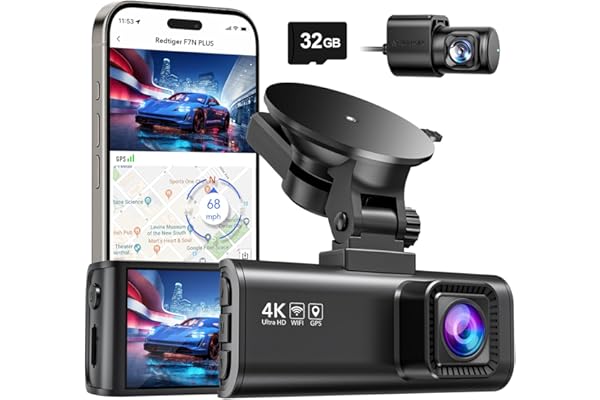Affordable Car Insurance for Young Drivers: Your Guide to Finding the Best Rates
Getting your driver’s license is a quintessential American rite of passage. It’s a symbol of freedom, independence, and the open road. But that excitement can quickly be followed by a sobering reality: the sky-high cost of car insurance. For young drivers—typically those under 25—the premiums can be astronomical, often costing two or three times more than for an experienced adult. This isn’t just a hurdle; for many, it’s a significant financial barrier. 🚗
Why the steep price? It comes down to statistics. Insurance companies base their rates on risk, and unfortunately, drivers aged 16 to 19 are nearly three times more likely than drivers aged 20 and over to be in a fatal crash per mile driven. This lack of experience, combined with a higher statistical likelihood of risky behaviors, puts young drivers in the highest-risk category. But here’s the good news: you are not powerless. High rates are not a life sentence.
There are numerous proven strategies and little-known discounts that can dramatically lower your premiums. This comprehensive guide will serve as your roadmap to finding affordable car insurance. We’ll break down why rates are so high and then provide a clear, actionable checklist of tips to help you and your family navigate the system and secure the best possible rates.
Key Takeaways: Your Cheat Sheet to Cheaper Insurance 💰
- Young drivers pay more due to their statistical lack of experience and higher accident rates.
- The most powerful strategy is to **compare quotes** from at least three to five different insurance companies.
- Key discounts to ask for include the **Good Student Discount, Driver’s Ed Discount, and Distant Student Discount**.
- Staying on a **parent’s multi-car policy** is almost always cheaper than getting a separate policy.
- The type of car you drive has a massive impact. Choose a safe, reliable, and modest vehicle.
Why is Car Insurance So Expensive for Young Drivers?
Before we dive into the solutions, it’s important to understand the problem. Insurance companies are in the business of risk management. They use complex algorithms with dozens of factors to determine the likelihood that a driver will file a claim. For young drivers, several factors work against them:
- Lack of Driving History: You don’t have a proven track record of safe driving. An insurer has no data to suggest you are a low-risk client.
- Statistical Risk: As mentioned, teenagers have the highest crash rates of any age group. This isn’t personal; it’s a statistical reality that insurers must account for.
- Higher Likelihood of Distractions: Studies show younger drivers are more prone to distractions like using their phones, playing loud music, or having multiple passengers in the car.
- Inexperience in Hazardous Conditions: A new driver has less experience handling difficult situations like heavy rain, snow, or unexpected road hazards.
Think of it this way: to an insurer, a new young driver is a complete unknown. They have to price your policy based on the “worst-case scenario” for your demographic until you prove, over time, that you are a safe and responsible driver.
The Ultimate Guide to Lowering Your Premiums
Now for the good news. You can actively manage these risk factors and take advantage of numerous strategies to lower your costs. Let’s break them down step-by-step.
1. The Golden Rule: Shop Around and Compare Quotes
This is, without a doubt, the single most important tip. Never accept the first quote you receive. The insurance industry is highly competitive, and the rates for the exact same coverage for the exact same driver can vary by hundreds, or even thousands, of dollars per year between companies. Get quotes from at least three (ideally five or more) different insurers. Include large national brands like Geico, Progressive, and State Farm, as well as smaller, regional companies.
2. Hunt for Every Possible Discount
Insurance companies offer a wide array of discounts, and many are specifically designed for young drivers. You often have to ask for them specifically, so be proactive!
| Discount Name | Who Qualifies? | How It Works |
|---|---|---|
| Good Student Discount | High school or full-time college students with a good academic record (typically a “B” average or 3.0 GPA). | Insurers see a correlation between good grades and responsible behavior. This can often save you 10-25%. |
| Driver’s Education Discount | Students who have completed an approved driver’s education course. | Formal training demonstrates a commitment to safety and reduces risk. |
| Distant Student / Student Away at School Discount | Students who attend college over 100 miles from home and do not take a car with them. | If you’re only driving during school breaks, your annual mileage (and risk) is much lower. |
| Defensive Driving Course Discount | Any driver who completes an approved defensive driving course. | This shows you are proactively learning to be a safer driver. |
| Telematics / Usage-Based Insurance (UBI) | Drivers willing to use a smartphone app or a plug-in device that monitors their driving habits. | Good habits like smooth braking, safe speeds, and not using your phone can earn you significant discounts based on your actual driving, not just statistics. |
3. Stay on Your Parents’ Policy
For as long as you live at home (and sometimes even when you’re away at college), staying on your family’s insurance policy is almost always the cheapest option. Your parents likely qualify for multi-car, multi-policy (bundling home and auto), and loyalty discounts that you wouldn’t get on your own. Being added to their policy will still increase their premium, but that increase will be far less than the cost of a standalone policy for you.
4. Choose Your Car Wisely
The car you drive is one of the biggest factors in your insurance rate. That high-performance sports car might be tempting, but it’s a red flag for insurers. To keep rates low, choose a vehicle that is:
- Modest and Reliable: A used sedan (like a Honda Accord or Toyota Camry) is much cheaper to insure than a new SUV or a muscle car.
- High in Safety Ratings: Cars with excellent crash test ratings and safety features like automatic emergency braking and blind-spot monitoring often qualify for discounts.
- Low in Theft Rates: Some cars are stolen more often than others. Insurers know this, and they price policies accordingly.
5. Optimize Your Coverage
Don’t just buy the most expensive policy. Understand what you’re paying for:
- Raise Your Deductible: Your deductible is what you pay out-of-pocket before your insurance kicks in. Raising it from $500 to $1,000 can significantly lower your premium. Just make sure you can afford to pay the higher amount if you have an accident.
- Consider Dropping Collision/Comprehensive on Older Cars: If you drive an old car with a low market value, the cost of full coverage might be more than the car is worth. If the car’s value is less than 10 times the premium, it might be time to consider liability-only coverage.
6. Maintain a Clean Driving Record
This is the long-term strategy. Nothing lowers your rates more effectively than time and a clean record. A single speeding ticket or at-fault accident can erase all your hard-earned discounts and keep your premiums high for years. Drive safely, avoid distractions, and obey traffic laws. Over time, you will transition from a high-risk statistic to a proven, low-risk driver in the eyes of your insurer.
Essential Gear for Young Drivers
Beyond insurance, equipping a car with the right tools can enhance safety and peace of mind. Here are some highly-rated products on Amazon perfect for new drivers who want to be prepared. And while you’re at it, don’t forget the little things that make a car your own, like finding the best car air fresheners or practical accessories like the best coin holders for a car.

Dash Cam
A dash cam provides an objective record in case of an accident, protecting you from false claims. Some insurers even offer a discount for using one.
View on Amazon
Roadside Emergency Kit
Every new driver should have one. This kit typically includes jumper cables, a first-aid kit, and basic tools, providing peace of mind for any unexpected situation.
View on Amazon
Hands-Free Phone Mount
Distracted driving is a major risk. A simple phone mount allows for safe, hands-free use of GPS, which is essential for any driver. It’s a small investment in safety.
View on AmazonAnd don’t forget to protect your car’s interior from the inevitable spills and messes. Using one of the best car seat protector sprays can keep your upholstery looking new for years.
Frequently Asked Questions (FAQs)
Q1: At what age does car insurance typically go down?
A: You’ll generally see a significant drop in your premiums when you turn **25 years old**, assuming you’ve maintained a clean driving record. Before that, you may see smaller decreases each year as you build more experience.
Q2: Does my GPA really affect my car insurance?
A: Yes, it absolutely can. The “Good Student Discount” is one of the most significant and common discounts available to young drivers. Insurers have found a strong statistical correlation between academic responsibility and driving responsibility. Be sure to submit your transcript to your insurer each semester!
Q3: Should I tell my insurance company if I get a speeding ticket?
A: You are not required to report a ticket to your insurer. However, they will almost certainly find out. Insurance companies regularly review the driving records (MVRs) of their policyholders, especially at renewal time. A new ticket will likely lead to a rate increase and the loss of any “good driver” discounts.
Q4: Is it cheaper to pay my insurance premium monthly or all at once?
A: It is almost always cheaper to pay your premium for the full term (typically six months or a year) upfront. Most insurance companies charge a small administrative or installment fee for each monthly payment. If you can afford to pay in full, you can often save 5-10%.


